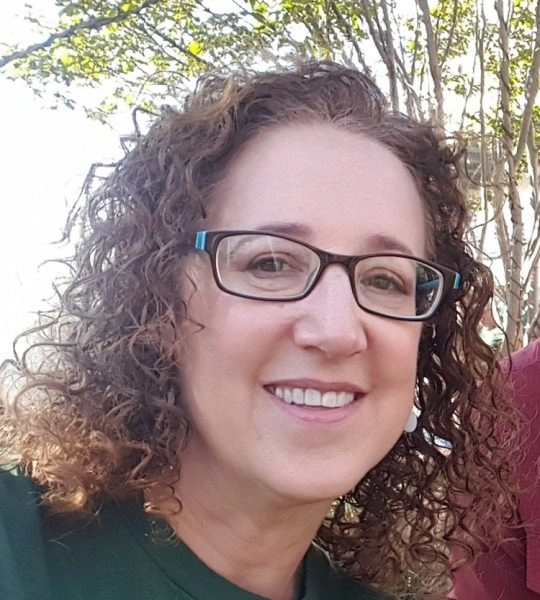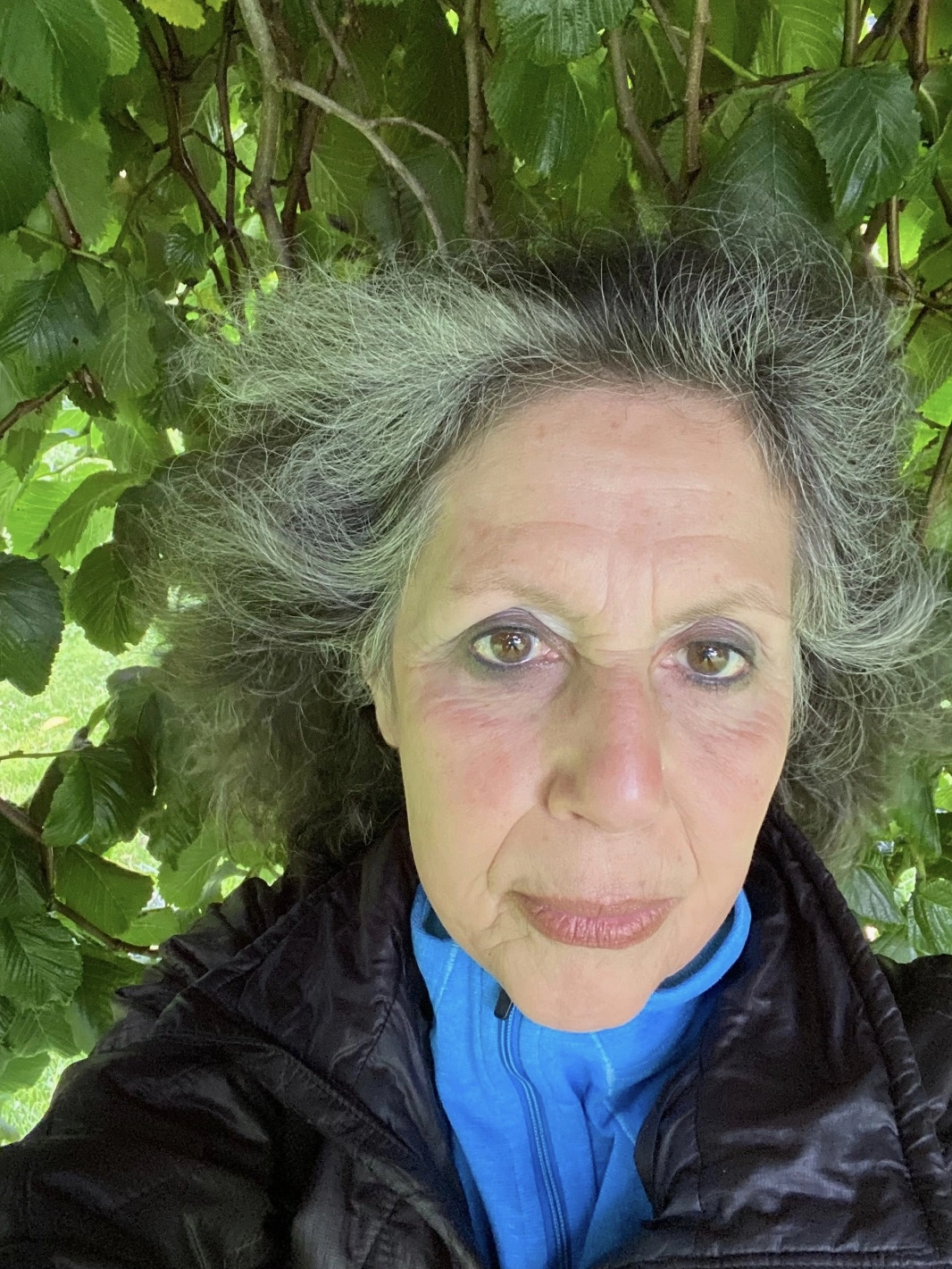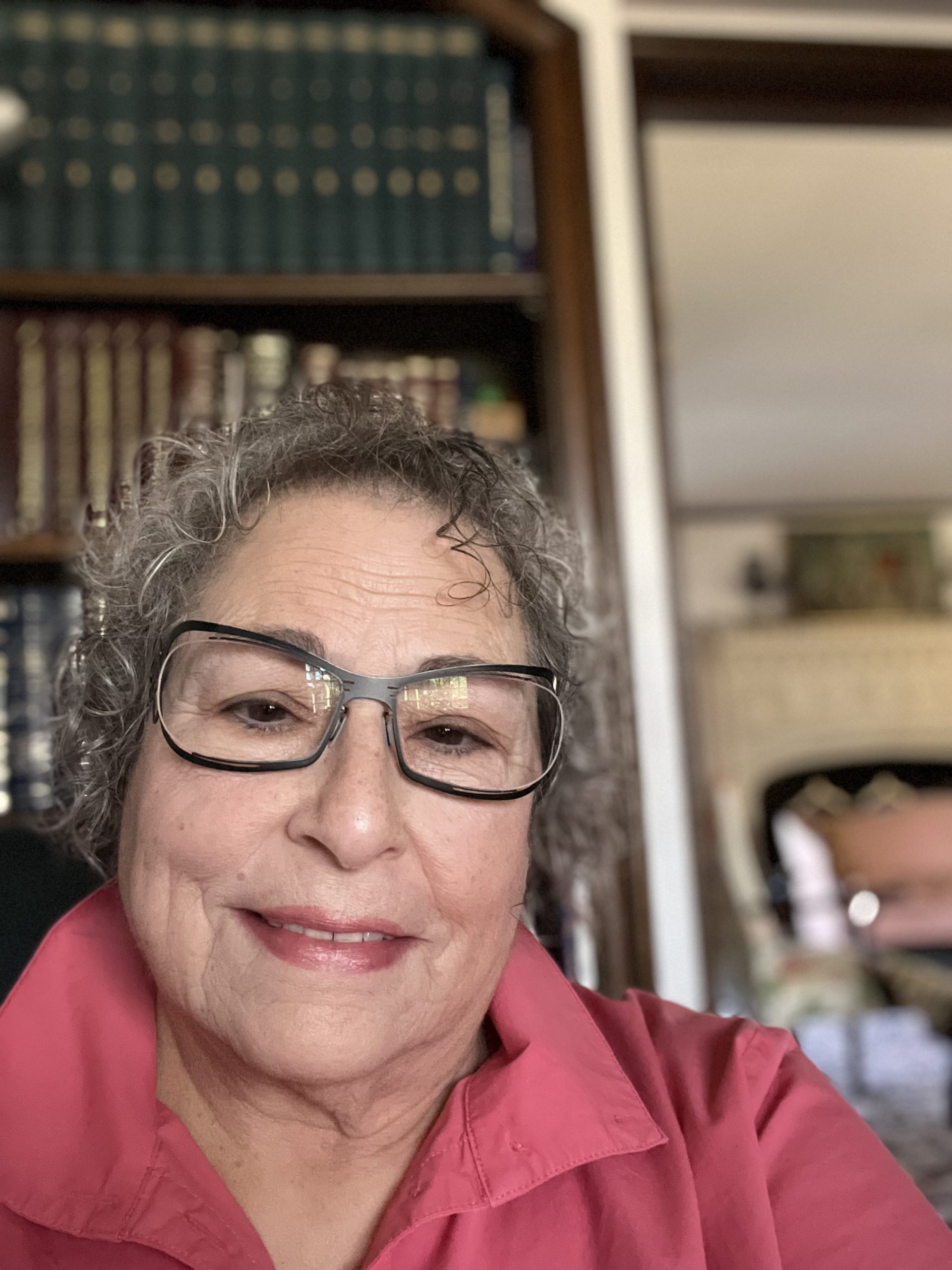The Kohen Gadol first sprinkles the blood of the bull in the Holy of Holies. Then he slaughters the goat and sprinkles its blood. How is the sprinkling done – where? How many? In what direction? Is it the same for the bull and the goat? How is this all derived from the verses? The counting is done by also mentioning the one sparkling that was upwards at the time he is counting the downward ones. Why? Are there two stands or just one for the bloods of the bull and goat? Rabbi Yehuda disagrees with Tana Kama. The gemara brings the Mishna Shekalim 6:4 to try to understand why Rabbi Yehuda holds that there was only one stand – is it because people may not read what is written and may make a mistake? The gemara rejects this possibility and explains the reason in Shekalim differently and as such, it does not teach us anything about our mishna.
This week’s learning is sponsored by Caroline Bollag l’ilui nishmat Pinchas ben Menashe Peyser.
Want to dedicate learning? Get started here:


Today’s daily daf tools:
This week’s learning is sponsored by Caroline Bollag l’ilui nishmat Pinchas ben Menashe Peyser.
Today’s daily daf tools:
Delve Deeper
Broaden your understanding of the topics on this daf with classes and podcasts from top women Talmud scholars.
New to Talmud?
Check out our resources designed to help you navigate a page of Talmud – and study at the pace, level and style that fits you.
The Hadran Women’s Tapestry
Meet the diverse women learning Gemara at Hadran and hear their stories.
Yoma 55
כִּמְנַגְּדָנָא. תָּנָא, כְּשֶׁהוּא מַזֶּה — אֵינוֹ מַזֶּה עַל הַכַּפּוֹרֶת, אֶלָּא כְּנֶגֶד עוֹבְיָהּ שֶׁל כַּפּוֹרֶת. כְּשֶׁהוּא מַזֶּה לְמַעְלָה — מְצַדֵּד יָדוֹ לְמַטָּה. וּכְשֶׁהוּא מַזֶּה לְמַטָּה — מְצַדֵּד יָדוֹ לְמַעְלָה.
like one who lashes with a whip on the back of another and who occasionally strikes lower down. A Sage taught in the Tosefta: When the High Priest sprinkles the blood, he does not sprinkle on the top of the Ark cover; rather, he does so against the thickness of the Ark cover. When he sprinkles once upward, he turns his hand so that the back of his hand faces downward, and he then sprinkles upward. And when he sprinkles seven times downward, he turns his hand so its back is upward. However, he does not sprinkle on the Ark cover or below it, so that the blood does not actually come into contact with it.
מְנָא הָנֵי מִילֵּי? אָמַר רַב אַחָא בַּר יַעֲקֹב, אָמַר רַבִּי זֵירָא, אָמַר קְרָא: ״וְהִזָּה אוֹתוֹ עַל הַכַּפּוֹרֶת וְלִפְנֵי הַכַּפּוֹרֶת״, לֹא יֹאמַר ״לְמַטָּה״ בְּשָׂעִיר, דְּלָא צְרִיךְ, דְּגָמַר מִמַּטָּה דְּפַר,
The Gemara asks: From where are these matters, that the sprinklings do not actually touch the Ark cover, derived? Rav Aḥa bar Ya’akov said that Rabbi Zeira said: The verse states with regard to the goat sacrificed as a sin-offering: “And he shall do with its blood as he did with the blood of the bull, and sprinkle it upon the Ark cover and before the Ark cover” (Leviticus 16:15). The verse should not say downward, i.e., “before the Ark cover,” with regard to the goat, as this is unnecessary; this requirement is derived from the term downward in connection with the bull.
לָמָּה נֶאֱמַר — לְאַקּוֹשֵׁי ״עַל״ לְ״לִפְנֵי״: מָה ״לִפְנֵי״ דְּלָאו עַל, אַף ״עַל״ דְּלָאו עַל.
Since the rite performed with the blood of the goat is compared to the rite of the blood of the bull, why is the requirement that the High Priest must sprinkle downward stated twice? It is to juxtapose the phrase “upon the Ark cover” to “before the Ark cover”; just as “before” means that it is not actually on the Ark cover but merely in front of it, so too, “upon” means that it is not actually on the Ark cover but in front of it, and the High Priest simply turns his hand upward.
אַדְּרַבָּה: לֹא יֵאָמֵר ״לְמַעְלָה״ בְּפַר דְּלָא צְרִיךְ, דְּגָמַר מִמַּעְלָה דְשָׂעִיר. לָמָּה נֶאֱמַר? לְאַקּוֹשֵׁי ״לִפְנֵי״ לְ״עַל״: מָה ״עַל״ — עַל מַמָּשׁ, אַף ״לִפְנֵי״ — עַל מַמָּשׁ!
The Gemara raises a difficulty: On the contrary, the verse should not say upward, i.e., “before the Ark cover,” with regard to the bull, as this is unnecessary; it is derived from the term upward stated in connection to the goat. Since the verse equates the two rituals, why does it state the upward sprinkling of the blood of the bull? It is to juxtapose the phrase “before the Ark cover,” stated with regard to the bull, to “upon the Ark cover,” stated with regard to the goat; just as “upon” stated by the goat means actually upon, as indicated by the literal meaning of the verse, so too, “before” means actually upon it, i.e., the blood of the goat should touch the thickness of the Ark cover.
הַאי מַאי?! אִי אָמְרַתְּ בִּשְׁלָמָא לְמַטָּה דְשָׂעִיר לְאַקּוֹשֵׁי לְמַעְלָה דְפַר — מִיבְּעֵי לֵיהּ לְכִדְתָנָא דְּבֵי רַבִּי אֱלִיעֶזֶר בֶּן יַעֲקֹב. דְּתָנָא דְּבֵי רַבִּי אֱלִיעֶזֶר בֶּן יַעֲקֹב: ״עַל פְּנֵי הַכַּפּוֹרֶת קֵדְמָה״ — זֶה בָּנָה אָב: כׇּל מָקוֹם שֶׁנֶּאֱמַר ״פְּנֵי״ אֵינוֹ אֶלָּא קָדִים. אֶלָּא אִי אָמְרַתְּ לְמַעְלָה דְפַר לְאַקּוֹשֵׁי לְמַטָּה דְשָׂעִיר — לְמַאי אֲתָא?
The Gemara expresses surprise at this suggestion: What is this comparison? Granted, if you say that downward stated with regard to the goat is mentioned to juxtapose it to upward stated with regard to the bull, one needs the phrase “upon the Ark cover,” which deals with the blood of the bull, for that which the school of Rabbi Eliezer ben Ya’akov taught. As the school of Rabbi Eliezer ben Ya’akov taught: “Upon [al penei] the Ark cover to the east” (Leviticus 16:14); this forms an analogy that applies to the entire Torah: Any place where it is stated “face [penei],” it is referring to nothing other than the eastern side. However, if you say, as suggested by the question, that upward with regard to the bull is mentioned to juxtapose it to “upward” stated with regard to the goat, for what purpose does downward stated with regard to the goat come; what do we learn from this phrase? Rather, the first interpretation of the verse must be correct.
תָּנוּ רַבָּנַן: ״וְהִזָּה אֹתוֹ עַל הַכַּפּוֹרֶת וְלִפְנֵי הַכַּפּוֹרֶת״ — לָמַדְנוּ: כַּמָּה לְמַעְלָה בַּשָּׂעִיר — אַחַת. לְמַטָּה בַּשָּׂעִיר, אֵינִי יוֹדֵעַ כַּמָּה!
§ The Sages taught: “And sprinkle it upon the Ark cover and before the Ark cover” (Leviticus 16:15). We have thereby learned how many times the High Priest must sprinkle upward for the goat, that is, one sprinkling, as it states: “And sprinkle.” However, with regard to the sprinkling downward for the goat, before the Ark cover, I do not know how many times he must sprinkle.
הֲרֵינִי דָּן: נֶאֶמְרוּ דָּמִים לְמַטָּה בַּפָּר, וְנֶאֶמְרוּ דָּמִים לְמַטָּה בַּשָּׂעִיר. מָה לְמַטָּה בַּפָּר — שֶׁבַע, אַף לְמַטָּה בַּשָּׂעִיר — שֶׁבַע.
I therefore derive the halakha from the verses. It states that blood is sprinkled downward in the case of the bull, and it states that blood is sprinkled downward in the case of the goat. Just as the blood that he sprinkles downward in the case of the bull consists of seven sprinklings, as the verse explicitly states: “And before the Ark cover he shall sprinkle seven times” (Leviticus 16:14), so too, the sprinkling of the blood downward in the case of the goat is performed seven times.
אוֹ כְּלָךְ לְדֶרֶךְ זוֹ: נֶאֶמְרוּ דָּמִים לְמַעְלָה בַּשָּׂעִיר, וְנֶאֶמְרוּ דָּמִים לְמַטָּה בַּשָּׂעִיר. מָה לְמַעְלָה בַּשָּׂעִיר — אַחַת, אַף לְמַטָּה בַּשָּׂעִיר — אַחַת? נִרְאֶה לְמִי דּוֹמֶה: דָּנִין מַטָּה מִמַּטָּה, וְאֵין דָּנִין מַטָּה מִלְמַעְלָה.
The Gemara raises a difficulty: Or one can go and reason this way: It states that blood is sprinkled upward in the case of the goat, and likewise it states that blood is sprinkled downward in the case of the goat. Just as with regard to sprinkling upward in the case of the goat there is one sprinkling, so too, with regard to sprinkling downward in the case of the goat there is only one sprinkling. The Gemara comments: Let us see what case this resembles: One derives an act performed downward from another act that is downward, and one does not derive an act performed downward from an upward act.
אַדְּרַבָּה, דָּנִין גּוּפוֹ מִגּוּפוֹ, וְאֵין דָּנִין גּוּפוֹ מֵעָלְמָא! תַּלְמוּד לוֹמַר: ״וְעָשָׂה אֶת דָּמוֹ כַּאֲשֶׁר עָשָׂה לְדַם הַפָּר״, שֶׁאֵין תַּלְמוּד לוֹמַר ״כַּאֲשֶׁר עָשָׂה״, וּמָה תַּלְמוּד לוֹמַר ״כַּאֲשֶׁר עָשָׂה״ — שֶׁיִּהְיוּ כׇּל עֲשִׂיּוֹתָיו שָׁווֹת. כְּשֵׁם שֶׁלְּמַטָּה בַּפָּר — שֶׁבַע, כָּךְ לְמַטָּה בַּשָּׂעִיר — שֶׁבַע.
The Gemara retorts: On the contrary, one derives one aspect of a matter from another aspect of that same matter, i.e., one should infer the halakha with regard to the blood of the goat from another halakha involving that same blood, and one does not derive the halakha of that matter from an external matter. Therefore, the verse states: “And he shall do with its blood as he did with the blood of the bull” (Leviticus 16:15). As there is no need for the verse to state: “As he did,” because the whole process is explicitly stated a second time, what then is the meaning when the verse states: “As he did”? It comes to teach that all his actions should be alike, down to every detail. Consequently, just as the sprinklings downward in the case of the bull are seven, so too, the sprinklings downward in the case of the goat are seven.
לָמַדְנוּ כַּמָּה לְמַטָּה? בַּפָּר וּבַשָּׂעִיר — שֶׁבַע. לְמַעְלָה בַּפָּר אֵינִי יוֹדֵעַ כַּמָּה, וַהֲרֵינִי דָּן: נֶאֶמְרוּ דָּמִים לְמַעְלָה בַּשָּׂעִיר, וְנֶאֶמְרוּ דָּמִים לְמַעְלָה בַּפָּר. מָה לְמַעְלָה בַּשָּׂעִיר — אַחַת, אַף לְמַעְלָה בַּפָּר — אַחַת.
We have thereby learned how many sprinklings are performed downward in the case of the bull and by the goat: Seven. However, I do not know how many times the High Priest must sprinkle upward in the case of the bull. And I therefore derive the halakha as follows: It states that blood is sprinkled upward in the case of the goat, and it states that blood is sprinkled upward in the case of the bull. Just as with regard to the sprinkling upward in the case of the goat he sprinkles one time, as stated explicitly, so too, in the case of the bull he sprinkles upward one time.
אוֹ כְּלָךְ לַדֶּרֶךְ זוֹ: נֶאֶמְרוּ דָּמִים לְמַטָּה בַּפָּר, וְנֶאֶמְרוּ דָּמִים לְמַעְלָה בַּפָּר. מָה לְמַטָּה בַּפָּר — שֶׁבַע, אַף לְמַעְלָה בַּפָּר — שֶׁבַע! נִרְאֶה לְמִי דּוֹמֶה? דָּנִין מַעְלָה מִמַּעְלָה, וְאֵין דָּנִין מַעְלָה מִמַּטָּה!
The Gemara raises a difficulty: Or one can go and reason this way: It is stated that blood is sprinkled downward in the case of the bull, and likewise it is stated that blood is sprinkled upward in the case of the bull. Just as with regard to sprinkling downward in the case of the bull there are seven sprinklings, so too, with regard to sprinkling upward in the case of the bull there should be seven sprinklings. The Gemara comments: Let us see what case this resembles: One derives an act performed upward from another act that is performed upward, and one does not derive an act performed upward from a downward act.
אַדְּרַבָּה: דָּנִין גּוּפוֹ מִגּוּפוֹ, וְאֵין דָּנִין גּוּפוֹ מֵעָלְמָא! תַּלְמוּד לוֹמַר: ״וְעָשָׂה אֶת דָּמוֹ כַּאֲשֶׁר עָשָׂה״, שֶׁאֵין תַּלְמוּד לוֹמַר ״כַּאֲשֶׁר עָשָׂה״, וּמָה תַּלְמוּד לוֹמַר ״כַּאֲשֶׁר עָשָׂה״? שֶׁיִּהְיוּ כׇּל עֲשִׂיּוֹתָיו שָׁווֹת, כְּשֵׁם שֶׁלְּמַטָּה בַּפָּר — שֶׁבַע, כָּךְ לְמַטָּה בַּשָּׂעִיר — שֶׁבַע. וּכְשֵׁם שֶׁלְּמַעְלָה בַּשָּׂעִיר — אַחַת, כָּךְ לְמַעְלָה בַּפָּר — אַחַת.
The Gemara retorts: On the contrary, one derives one aspect of a matter from another aspect of that same matter, and one does not derive the halakha of that matter from an external matter. Therefore, the verse states: “And he shall do with its blood as he did.” As there is no need for the verse to state: “As he did,” because the whole process is explicitly stated a second time, what then is the meaning when the verse states: “As he did”? It comes to teach that all his actions should be alike: Just as the sprinklings downward in the case of the bull are seven, so too, the sprinklings downward in the case of the goat are seven; and just as the sprinkling upward in the case of the goat is one, so too, the sprinkling upward in the case of the bull is one.
אַחַת, אַחַת וְאַחַת, אַחַת וּשְׁתַּיִם. תָּנוּ רַבָּנַן: אַחַת, אַחַת וְאַחַת, אַחַת וּשְׁתַּיִם, אַחַת וְשָׁלֹשׁ, אַחַת וְאַרְבַּע, אַחַת וְחָמֵשׁ, אַחַת וָשֵׁשׁ, אַחַת וָשֶׁבַע, דִּבְרֵי רַבִּי מֵאִיר. רַבִּי יְהוּדָה אוֹמֵר: אַחַת, אַחַת וְאַחַת, שְׁתַּיִם וְאַחַת, שָׁלֹשׁ וְאַחַת, אַרְבַּע וְאַחַת, חָמֵשׁ וְאַחַת, שֵׁשׁ וְאַחַת, שֶׁבַע וְאַחַת.
§ The mishna states that the High Priest counted: One; one and one; one and two. The Sages taught in a baraita that when sprinkling, the High Priest counted: One; one and one; one and two; one and three; one and four; one and five; one and six; one and seven. This is the statement of Rabbi Meir. Rabbi Yehuda says that he counted: One; one and one; two and one; three and one; four and one; five and one; six and one; seven and one.
וְלָא פְּלִיגִי: מָר כִּי אַתְרֵיהּ וּמָר כִּי אַתְרֵיהּ.
The Gemara comments: They do not disagree about the matter itself that the High Priest sprinkles once upward and seven times downward. Rather, this Sage rules in accordance with the norm in his place, and this Sage rules in accordance with the norm in his place. In one place they counted the smaller number first, while in the other place they would count the larger number first.
דְּכוּלֵּי עָלְמָא מִיהַת הַזָּאָה רִאשׁוֹנָה צְרִיכָה מִנְיָן עִם כׇּל אַחַת וְאַחַת, מַאי טַעְמָא? רַבִּי אֶלְעָזָר אָמַר: שֶׁלֹּא יִטְעֶה בַּהַזָּאוֹת.
The Gemara asks: In any case, everyone, both Rabbi Meir and Rabbi Yehuda, agrees that the first sprinkling upward must be counted together with each and every one of the subsequent sprinklings. What is the reason for this? Why can’t the High Priest count the downward sprinklings separately? The Sages debated this matter. Rabbi Elazar said: The reason is so that he does not err in the sprinklings. If the High Priest were to count downward without including the first upward sprinkling, he might mistakenly think that his calculation includes the first sprinkling, which would lead him to add another one.
רַבִּי יוֹחָנָן אָמַר, אָמַר קְרָא: ״וְלִפְנֵי הַכַּפּוֹרֶת יַזֶּה״, שֶׁאֵין תַּלְמוּד לוֹמַר ״יַזֶּה״, וּמָה תַּלְמוּד לוֹמַר ״יַזֶּה״? לִימֵּד עַל הַזָּאָה רִאשׁוֹנָה שֶׁצְּרִיכָה מִנְיָן עִם כׇּל אַחַת וְאַחַת.
Rabbi Yoḥanan said that the reason is that the verse states: “And he shall sprinkle it with his finger upon the Ark cover, and before the Ark cover he shall sprinkle” (Leviticus 16:14). As there is no need for the verse to state: He shall sprinkle” again, what is the meaning when the verse states: “He shall sprinkle”? This teaches with regard to the first sprinkling that it must be counted with each and every subsequent one, i.e., he must mention the first sprinkling every time.
מַאי בֵּינַיְיהוּ? אִיכָּא בֵּינַיְיהוּ דְּלֹא מָנָה וְלֹא טָעָה.
The Gemara asks: What is the practical difference between these two explanations? The Gemara answers: The practical difference between them concerns a case where he did not count the first sprinkling and did not err. That is acceptable according to the opinion of Rabbi Elazar, whereas according to Rabbi Yoḥanan the High Priest acted incorrectly, as it is a mitzva to count the first one.
יָצָא וְהִנִּיחוֹ עַל כַּן הַזָּהָב שֶׁבַּהֵיכָל. תְּנַן הָתָם: רַבִּי יְהוּדָה אוֹמֵר: לֹא הָיוּ שׁוֹפָרוֹת לְקִינֵּי חוֹבָה, מִפְּנֵי הַתַּעֲרוֹבוֹת.
§ The mishna taught that the High Priest emerged and placed the bowl with the remaining blood of the bull on the golden pedestal in the Sanctuary, and later he placed the goat’s blood on a second pedestal, whereas according to Rabbi Yehuda there was only one pedestal. The Gemara comments: We learned in a mishna there (Shekalim 6:6) that Rabbi Yehuda says: There were no collection horns for obligatory nests, i.e., the pairs of pigeons or turtledoves brought as sin- and burnt-offerings by women after childbirth or other individuals, due to the concern of mixtures.
מַאי מִפְּנֵי הַתַּעֲרוֹבוֹת? אָמַר רַב יוֹסֵף: מִפְּנֵי תַּעֲרוֹבֶת חוֹבָה בִּנְדָבָה. אָמַר לֵיהּ אַבָּיֵי: וְנַעֲבֵיד תְּרֵי וְנִכְתּוֹב עֲלַיְיהוּ הֵי דְּחוֹבָה וְהֵי דִּנְדָבָה? רַבִּי יְהוּדָה
The Gemara asks: What is the meaning of the phrase: Due to a mixture? Rav Yosef said: It means due to the possible mixture of obligatory nests with free-will ones. There was concern lest the priests mix the money given for obligatory nests, which are sacrificed as a sin-offering and a burnt-offering, with the money for free-will nests, which are sacrificed as a pair of burnt-offerings. Mixing the funds in this way would disqualify the birds. Abaye said to him: And let us prepare two collection horns and write on them which is the container for obligatory offerings and which is the one for free-will offerings. The Gemara answers: Rabbi Yehuda
לֵית לֵיהּ כְּתִיבָה. דִּתְנַן, רַבִּי יְהוּדָה אוֹמֵר: לֹא הָיָה שָׁם אֶלָּא כַּן אֶחָד בִּלְבַד. תְּרֵי מַאי טַעְמָא לָא — מִשּׁוּם דְּמִחַלְּפִי. וְנַעֲבֵיד תְּרֵי וְלִיכְתּוֹב עֲלַיְיהוּ הֵי דְפַר וְהֵי דְשָׂעִיר. אֶלָּא, לְרַבִּי יְהוּדָה לֵית לֵיהּ כְּתִיבָה.
does not accept that one may rely on writing in a situation where an error is possible. As we learned in the mishna that Rabbi Yehuda says: There was only one pedestal in the Temple on which to place the blood. What is the reason that they did not place two pedestals there? The reason is because the pedestals might be exchanged for one another, and he might take the goat’s blood instead of that of the bull. But in that case, let us place two pedestals and write on them which one is for the bull and which is for the goat. Rather, it is clear that Rabbi Yehuda does not accept that one may rely on writing in a situation where error is possible.
מֵיתִיבִי: שְׁלֹשׁ עֶשְׂרֵה שׁוֹפָרוֹת הָיוּ בְּמִקְדָּשׁ, וְהָיָה כָּתוּב עֲלֵיהֶן: תִּקְלִין חַדְתִּין, וְתִקְלִין עַתִּיקִין, וְקִינִּין, וְגוֹזְלֵי עוֹלָה, וְעֵצִים, וּלְבוֹנָה, וְזָהָב לְכַפּוֹרֶת, וְשִׁשָּׁה לִנְדָבָה.
The Gemara raises an objection against this conclusion: There were thirteen collection horns in the Temple, and they were each inscribed with different names. On one container was written: New shekels. In this horn they placed shekels that were donated at the correct time that year. And on another horn the phrase old shekels was written, referring to coins from the past year that did not reach the Temple during the allotted period. On the other horns, the following phrases were written: Nests, for obligatory offerings consisting of pairs of pigeons or turtledoves; young birds for burnt-offerings; wood, for anyone who wished to donate wood; frankincense; and gold for the Ark cover. And there were six additional boxes designated for communal free-will offerings of all kinds.
תִּקְלִין חַדְתִּין — אֵלּוּ שְׁקָלִים שֶׁל כׇּל שָׁנָה וְשָׁנָה, תִּקְלִין עַתִּיקִין — מִי שֶׁלֹּא שָׁקַל אֶשְׁתָּקַד, יִשְׁקוֹל לְשָׁנָה הַבָּאָה. קִינִּין — הֵן תּוֹרִין, גּוֹזְלֵי עוֹלָה — הֵן בְּנֵי יוֹנָה, וְכוּלָּן עוֹלוֹת, דִּבְרֵי רַבִּי יְהוּדָה.
The Gemara explains: New shekels, these are the shekels of each and every year that arrive on time; old shekels, these are for one who did not donate a shekel the previous year, who must donate the next year; nests, these are the turtledoves brought as offerings; young birds for burnt-offerings, these are pigeons; and all these birds are burnt-offerings; this is the statement of Rabbi Yehuda. Rabbi Yehuda maintains that there was no container for nests of obligatory sin-offerings and burnt-offerings, due to the potential mixture between the two. In any case, this shows that Rabbi Yehuda does rely on inscriptions written on containers, which contradicts the above claim that he does not rely on writing in these situations.
כִּי אֲתָא רַב דִּימִי, אֲמַר: אָמְרִי בְּמַעְרְבָא, גְּזֵירָה מִשּׁוּם חַטָּאת שֶׁמֵּתוּ בְּעָלֶיהָ. וּמִי חָיְישִׁינַן? וְהָתְנַן: הַשּׁוֹלֵחַ חַטָּאתוֹ מִמְּדִינַת הַיָּם — מַקְרִיבִין אוֹתָהּ בְּחֶזְקַת שֶׁהוּא קַיָּים!
When Rav Dimi came from Eretz Yisrael to Babylonia he said: They say in the West, Eretz Yisrael, that this is a rabbinic decree due to the possible presence in the mixture of a sin-offering whose owners have died. Since a sin-offering of this kind must be left to die, if one of the donors of the coins in the sin-offering horn passes away, his funds cannot be used. The Gemara asks: And are we concerned about the possible death of a donor? But didn’t we learn in a mishna: With regard to one who sends his sin-offering from overseas, they sacrifice it for him on the presumption that he is alive, although he might have died in the meantime. This shows that the possibility of death is not taken into account.
אֶלָּא: מִשּׁוּם חַטָּאת שֶׁמֵּתוּ בְּעָלֶיהָ וַדַּאי. וְנִבְרוֹר אַרְבָּעָה זוּזֵי וְנִשְׁדֵּי בְּמַיָּא, וְהָנָךְ נִישְׁתְּרוֹ? רַבִּי יְהוּדָה לֵית לֵיהּ בְּרֵירָה.
Rather, Rabbi Yehuda’s concern is due to a sin-offering whose owner has certainly died, lest it be confirmed that one of the people who donated money for a sin-offering bird has indeed died. The Gemara asks: Even so, this can be rectified, as let us select four zuz, the price of such an offering, and throw them into the water to be destroyed. It may be said that the money removed from the box was the money for the sin-offering whose owner died, and these other coins will be permitted. It will be clarified retroactively that these coins were designated for that purpose. The Gemara answers: Rabbi Yehuda does not accept the rule of retroactive clarification. In his opinion, one cannot issue a designation after the fact. Consequently, he rejects this solution.
מְנָא לַן? אִילֵּימָא מֵהָא דִּתְנַן: הַלּוֹקֵחַ יַיִן מִבֵּין הַכּוּתִיִּים, עֶרֶב שַׁבָּת עִם חֲשֵׁכָה — עוֹמֵד וְאוֹמֵר: שְׁנֵי לוּגִּין שֶׁאֲנִי עָתִיד לְהַפְרִישׁ הֲרֵי הֵן תְּרוּמָה.
The Gemara asks: From where do we derive that this is indeed Rabbi Yehuda’s opinion? If we say it is derived from that which we learned in the following mishna, there is a difficulty. The mishna states: With regard to one who buys wine from among the Samaritans, who do not tithe their produce properly, on Shabbat eve at nightfall and has no time to separate the tithe before Shabbat and to place the separated portions in distinct locations, he may arise and say: Two log of the one hundred log present here, which I will separate in the future, after Shabbat, shall be the teruma gedola given to a priest, as the Sages mandated that one-fiftieth of one’s produce constitutes an average measure of teruma;




















